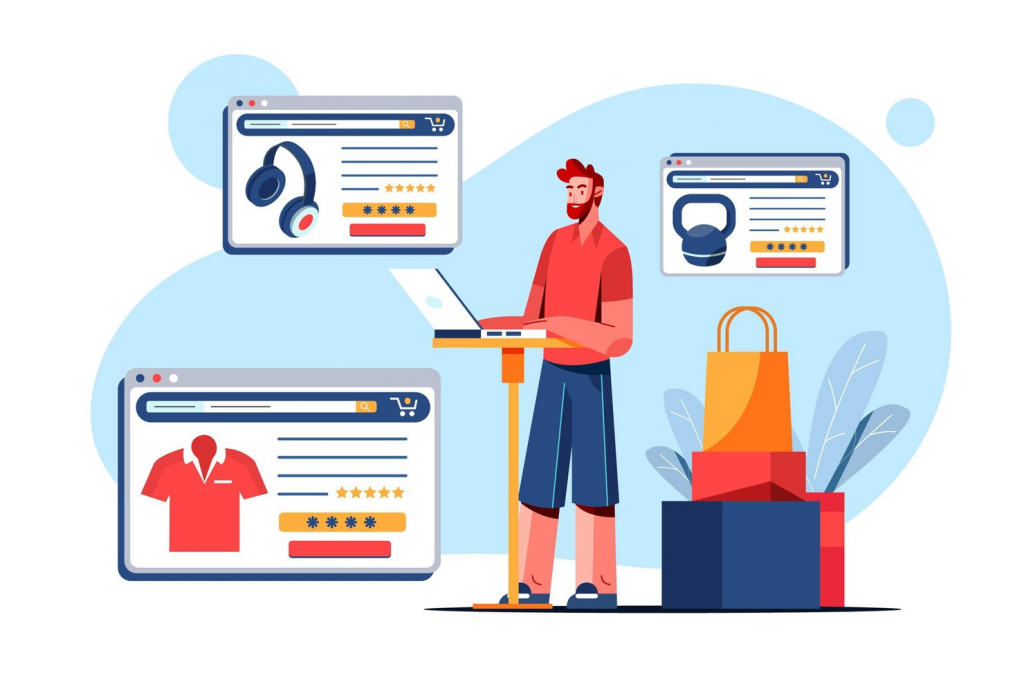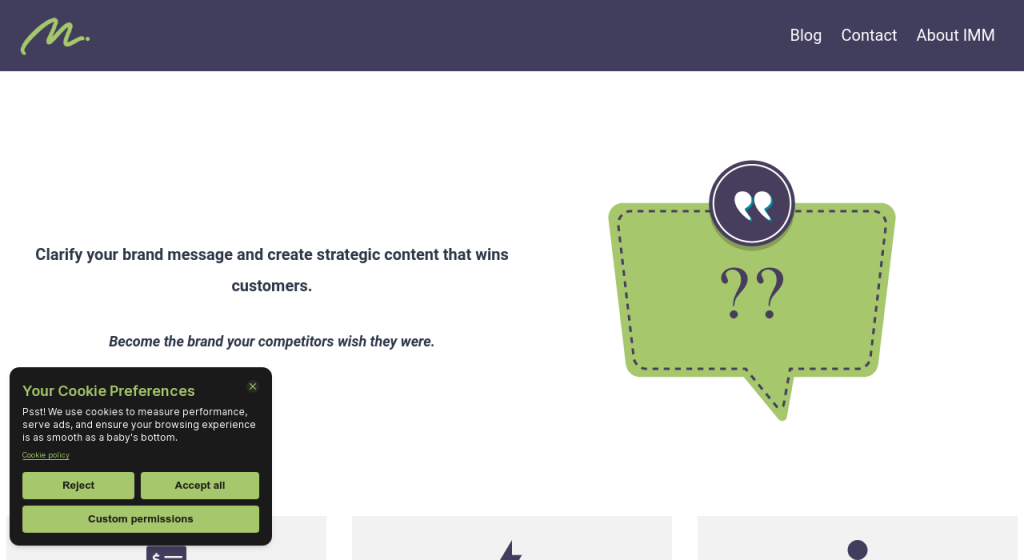User experience (UX) is a critical factor in the success of e-commerce websites. UX encompasses all aspects of the end-user’s interaction with a company, its services, and its products. For e-commerce businesses, a seamless and enjoyable UX can make the difference between a one-time visitor and a loyal customer. This post explores the importance of UX in e-commerce website development, highlighting essential design elements, benefits, and common pitfalls to avoid. With the rise of ecommerce web development services, it is crucial to understand how UX can significantly impact your online business.

The Role of User Experience in E-commerce
User experience (UX) is vital in shaping how visitors perceive an e-commerce website. A well-designed UX ensures that users can easily find products, make purchases, and navigate the site without frustration. Positive UX leads to higher customer satisfaction, increased sales, and better retention rates. On the other hand, poor UX can drive potential customers away, resulting in lost revenue and negative brand perception. E-commerce sites with intuitive designs and smooth functionality create a competitive edge, as they cater to the needs and expectations of modern consumers.
Moreover, UX affects more than just the immediate interaction. It influences the brand’s overall impression, customer trust, and willingness to return. In an era of abundant choices, a website offering a superior user experience stands out and encourages repeat business. Thus, investing in UX design is not merely about making a site look good but about crafting an environment that facilitates business goals and user satisfaction.
Key Elements of Effective UX Design
Effective UX design is crucial for creating e-commerce websites that meet user needs and expectations. By focusing on user-centered design, mobile responsiveness, and easy navigation, businesses can enhance the overall shopping experience. These key elements ensure users can effortlessly interact with the site, leading to increased satisfaction, higher conversion rates, and stronger customer loyalty. Let’s explore these essential components in more detail.
User-Centered Design
User-centered design (UCD) focuses on users’ needs, preferences, and behaviors throughout the design process. By prioritizing the user’s perspective, e-commerce websites can create intuitive and easy-to-use interfaces. UCD involves conducting user research, creating personas, and performing usability testing to gather insights into how real users interact with the site. This approach ensures that design decisions are based on user feedback, leading to more effective and satisfying user experiences.
For example, through user research, you might discover that your target audience values quick access to customer reviews and detailed product information. You address user needs directly by incorporating these elements prominently in the design. Personas help understand different user types, guiding the creation of features catering to various user segments. Usability testing further refines the design by highlighting areas of confusion or difficulty, allowing for continuous improvement.
Mobile Responsiveness
Mobile responsiveness has become a crucial aspect of UX design with the increasing use of smartphones for online shopping. A mobile-responsive website automatically adjusts its layout and functionality to suit different screen sizes and devices. This ensures users have a consistent and enjoyable experience, whether browsing on a desktop, tablet, or smartphone. Mobile-friendly designs improve user satisfaction and boost search engine rankings, as search engines like Google prioritize mobile-optimized sites.
Consider the shopping habits of modern consumers who might start browsing products on their phones during a commute and continue the purchase on a desktop at home. A seamless transition between devices is essential for maintaining user engagement. Mobile responsiveness involves optimizing touch interactions, ensuring fast load times, and providing clear and accessible navigation options. These enhancements cater to the growing mobile user base, making your site accessible and user-friendly across all devices.
Easy Navigation
Easy navigation is essential for helping users find what they are looking for quickly and efficiently. E-commerce websites should have clear and intuitive navigation menus, well-organized product categories, and effective search functionality. Breadcrumb trails, filters, and sorting options can further enhance the user experience by making locating specific items easier. Good navigation reduces frustration, increases time spent on the site, and leads to higher conversion rates.
Navigation should guide users through their shopping journey effortlessly. For instance, a clear main menu, concise category labels, and visible search bars help users locate products swiftly. Breadcrumb trails provide context, allowing users to understand their location within the site hierarchy. Filters and sorting options enable users to refine their search results based on preferences like price, popularity, or ratings. By simplifying the navigation process, you reduce cognitive load and help users make purchase decisions more comfortably.
Benefits of Good UX for E-commerce Websites
Investing in good UX design offers numerous benefits for e-commerce websites. Firstly, it improves customer satisfaction by providing a pleasant and hassle-free shopping experience. Satisfied customers are more likely to return and repeat purchases, boosting customer loyalty. Secondly, a well-designed UX can significantly increase conversion rates. Users who can easily navigate the site and complete transactions without obstacles are more likely to follow through with purchases. Additionally, good UX reduces bounce rates and increases the time users spend on the site, which can positively impact search engine rankings and organic traffic.
The benefits extend to brand reputation as well. Positive experiences encourage customers to leave favorable reviews and recommend the site to others, amplifying word-of-mouth marketing. Moreover, a user-friendly site will more likely capture and retain attention, leading to a deeper connection with the brand. Good UX also helps in building trust, as a well-functioning site reflects a professional and customer-centric approach. These factors collectively contribute to long-term business success and growth.
Common UX Mistakes to Avoid
Avoiding common UX mistakes is crucial for maintaining a high-quality user experience. One frequent error is neglecting mobile optimization, which can alienate many potential customers. Another mistake is having overly complex or cluttered navigation, which confuses and frustrates users. Slow loading times are another major UX flaw that can drive users away. Ensuring fast page load speeds is essential for keeping users engaged. Finally, ignoring user feedback and failing to conduct regular usability testing can result in a UX that does not meet users’ needs or expectations.
Other pitfalls include inconsistent design elements that disrupt the visual flow, lack of accessibility features that exclude certain user groups, and intrusive pop-ups interrupting the user journey. Addressing these issues involves adopting best practices such as responsive design, streamlined navigation, performance optimization, and inclusive design principles. Regularly updating the site based on user feedback and technological advancements helps maintain a high standard of UX, ensuring continuous user satisfaction.
Final Thoughts
User experience is a critical component of e-commerce website development. By prioritizing user-centered design, mobile responsiveness, and easy navigation, e-commerce businesses can create enjoyable and efficient online shopping experiences. The benefits of good UX are clear: higher customer satisfaction, increased conversion rates, and improved search engine performance. E-commerce sites can stay competitive and thrive in the digital marketplace by avoiding common mistakes and learning from successful examples. Investing in UX design is a technical requirement and a strategic advantage that can drive business success.
Understanding the significance of UX in e-commerce website development can transform your approach to building and maintaining your online store. Whether designing a new site or refining an existing one, focusing on user experience will ensure that your customers enjoy their interactions, leading to sustained growth and profitability.




